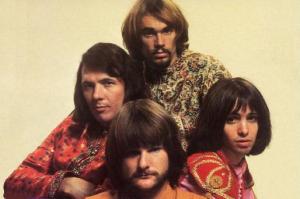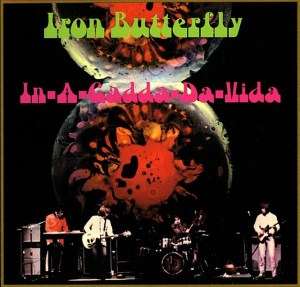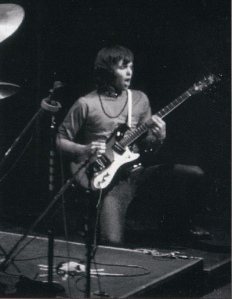Erik Brann was born in 1950. He began taking violin lessons at an early age; at age 4 he was declared a child prodigy, and was accepted into the Boston Symphony Orchestra’s prodigy program. By his early teens, had begun toying with other stringed instruments. At 15, after his family had relocated to California, Brann was playing in amateur rock bands like ‘The Mods’, then ‘The Phogg’, rehearsing in a friend’s garage, across the street from his home in Reseda. Brann and his buddies in ‘The Phogg’ played at school dances and other small local gigs, but had to be driven to and from by their bass player, a college freshmen 4 years older than the other members of the band and the only member old enough to drive.
Brann heard that a band from the area was in need of a guitarist. This group had released an album which had reached No. 78 on the charts, and had toured with the Doors and Jefferson Airplane. Brann was determined to get the job. One day he told his friends he was headed to The Whiskey on the Sunset Strip where this band was playing to try to get in and convince the group to hire him. His friends told him he probably wouldn’t even get into the club, never mind land the gig. Not only did Brann get into the club, but he convinced the band to give him a shot. Brann auditioned and got the gig. He was just 16 years old.

Brann’s new band began recording their second album for Atco, a division of Atlantic Records, in May of 1968. Side One was recorded in Hollywood, California; Side Two in Hempstead, New York. One of Brann’s own compositions was accepted and recorded, appearing on Side One. But it was Side Two’s lone track, clocking at 17 minutes and 5 seconds, that would have the most impact.
Because of that epic track’s lyrical theme: the story of Adam and Eve and man’s fall from grace in the Garden of Eden, Brann attempted to emulate animal noises with his guitar in the song’s long instrumental mid-section. Brann played a sunburst Moserite Mark 4 through a Moserite Fuzz-Rite pedal and three Vox Super Beatle amps, and recorded various squawks, shrieks, and howls that would have no doubt horrified his instructors back in Boston.
By the time the record is completed, Brann had turned 17. The band’s management were unsure about publicizing Brann’s age, perhaps fearing it will hurt the band’s credibility, but eventually decided to at allow its mention in the album’s liner notes:
“…SEVENTEEN-YEAR-OLD ERIK BRANN, A NATIVE OF BOSTON, MASSACHUSETTS, IS THE YOUNGEST AND ANOTHER “NOMAD” IN THE GROUP. ONE OF THE MOST TALENTED YOUNG LEAD GUITARISTS IN THE COUNTRY, HIS MUSICAL TRAINING BEGAN BEFORE SCHOOL AND BY THE TIME HE WAS SEVEN YEARS OF AGE, HE WAS A CONCERT VIOLINIST. ALTHOUGH MUSIC HAS ALWAYS BEEN HIS ONE GREAT LOVE, ERIK STUDIED DRAMA AND BEFORE JOINING…”
Erik Brann’s recording debut was released on June 14, 1968, followed in July by the album’s first single: a severely truncated version of the 17-minute album’s title track. Both album and single were smash hits. The single, edited to 2:53, excised the extended instrumental sections, including Brann’s adventurous guitar solo; it peaked at No. 30 in the Billboard Hot 100. But it was the original, un-edited 17-minutes-plus version that was the true ‘hit’, as many DJs chose to air the sprawling, unedited album version…

Iron Butterfly’s ‘In A-Gadda-Da-Vida’ is quite simply one of rock music’s greatest songs. It’s an instant acid flashback to all the excess and indulgence of the psychedelic 60s, but it also marks an important point in musical history: the moment where psychedelic rock mutates toward of the beginnings of heavy metal. It’s sinister tone and minor key drone have been used countless times in movies and TV to invoke the dark side of the 1960s and the Vietnam era. It’s all creepy keyboards, fuzzy guitars, melodramatic vocals, and a drum solo, slowly unfolding over 17 minutes like a bad trip, with more than a hint of menace and a seriously trippy title. Right on, man.
‘In A-Gadda-Da-Vida’ the album would debut at No. 117, but on the strength of the title track, the album would quickly sell 4 million copies in the U.S. alone, and peaked at No. 4 on the Billboard album charts, swiftly becoming Atlantic Records’ biggest selling album ever, until it was displaced by Led Zeppelin IV years later. It was the first album ever to be certified Platinum. In April of 1971, the record finally dropped out of the charts after an astounding 140 weeks. Eventually the record would sell over 30 million copies worldwide.
Within a few short months, 17-year old Erik Brann was a rock star. He bought a candy apple red Jaguar XKE; he bought Neil Diamond’s house in Tarzana. But Brann wouldn’t last the balance of the year as a member of Iron Butterfly; a number of illnesses, including a congenital heart defect, prevented him from touring for extended periods. Brann would later quip, “My first vacation I bought a car, a Jaguar, and parked it outside the hospital where I spent two weeks for ulcers and gastroenteritis.” Brann’s rock star dream would be over by the time he turned 18 years old. Erik Brann, aged 52, died of cardiac arrest in 2003, while the landmark song he helped to create has earned a place of permanence in rock history, where it will live on forever.
*Most people know this, I think; but in case you missed it:
In A Gadda Da Vida = In the Garden of Eden
